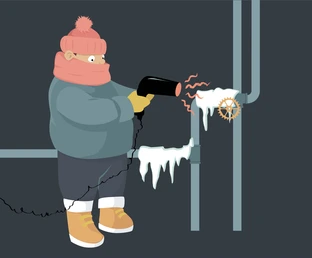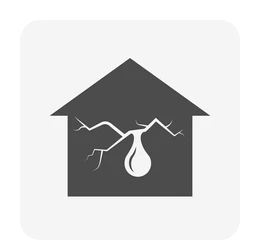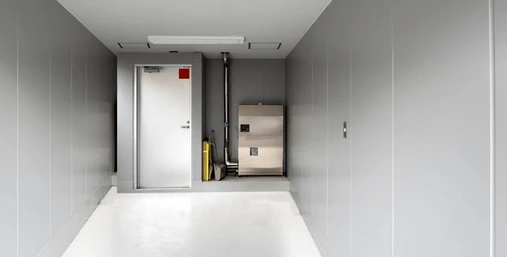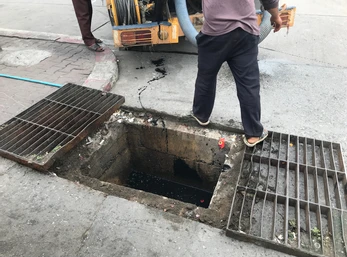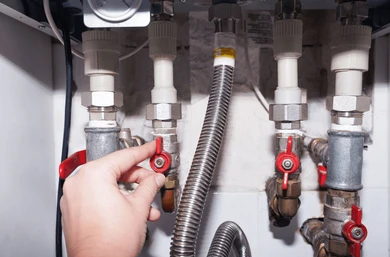For homeowners in the Dallas region, particularly in North Dallas, it’s common for traditional gas water heaters to develop leaks within the tank after a decade of use, typically between 10 to 12 years, unless replaced beforehand. In contrast, electric tank-style water heaters tend to have a slightly longer lifespan, with the average tank failing between 12 to 15 years. Regardless of the manufacturer, the average lifespan of a modern water heater tends to be consistent. While the brand name may vary, the overall durability of these appliances. However, it’s worth noting that regular maintenance and investing in a premium model with an extended warranty and enhanced corrosion protection can significantly increase its lifespan. Water Heaters As your water heater nears the end of its lifespan and you consider upgrading to a new tank, it’s natural to have some concerns about making an informed decision. A common inquiry we receive is: “Which water heater brand is the best choice for? Each year, we handle the repair and replacement of numerous water heaters. Therefore, this article will provide a summary of commonly found in the McKinney/Plano region. Chrome Air Conditioning exclusively offers and installs Reliance brand tank-style water heaters. Although the differences between standard 40 or 50-gallon gas and electric water heaters from various brands may be minimal, our experience has shown that Reliance consistently delivers superior quality and customer support, setting it apart from other brands we’ve partnered with. Water Heater Brands In the DFW area, a significant proportion of tank-style gas and electric water heaters are manufactured by a small group of parent companies. Specifically, Rheem, A.O. Smith, and Bradford White are the dominant players, with a portfolio that encompasses a range of subsidiary brands, including Ruud, General Electric, Kenmore, State Water Heaters, American Water Heaters, Whirlpool, and Lochinvar. Rheem/Ruud Rheem Manufacturing Company, based in the United States, heater manufacturer. The Rheem brand was established in 1925, while the Ruud brand dates back to 1897. Initially, Ruud specialized in gas-fired water heaters, while Rheem its production before focusing on becoming a top water heater manufacturer in the 1940s Rheem/Ruud, now a combined entity, is recognized for producing water heaters and HVAC systems. They also possess several other brands like Richmond, Eemax, and Ecosmart. In the past, they were involved in manufacturing water heaters for General Electric. Rheem offers a range of warranty options for their 50-g gas water heater, with the most popular choices being warranties lasting from 6 to 12 years for parts. When it comes to tankless water heaters designed for home use, Rheem typically provides a 15-year warranty for the heat exchanger and a 5. Rheem’s conventional residential tank-style gas water heater boasts several notable features, including a brass drain valve with improved flow capabilities, eliminating the need for a plastic valve, and a design that to be cleaned. Additionally, the unit is equipped with a TRD device that automatically shuts off both air intake and fuel supply in the event of a potentially hazardous flammable vapor accumulation. AO Smith A.O. Smith, established in 1874, initially produced a range of items before expanding into the production of water heaters in the 1930s. As a leading producer of water heaters, the company has expanded its portfolio through strategic acquisitions, incorporating several prominent brands under its umbrella, including Takagi, State Water Heaters, American Water Heaters, Reliance Water Heaters, and Lochinvar. Additionally, the company has previously manufactured water heaters for well-known brands such as Whirlpool and Kenmore, although these brands are no longer active in the water heater market. The standard warranty choices for A.O. Smith residential water heaters, which are usually 50 gallons in capacity, include durations of 6, 8, or 10 years. The standard gas residential unit they promote includes features such as a gas burner design with low-NOx emissions, a diffuser dip tube design that is trademarked to prevent sediment buildup, and an anode rod containing a stainless steel core for extended durability. Bradford White Established in 1881, Bradford White has evolved into a leading US-based company specializing in the production of water heaters, with a reputation that spans over a century. In contrast to their competitors, they have a reputation for exclusively manufacturing water heaters under their own brand and for distributing them directly to professionals via supply houses instead of selling them to consumers through large retail chains. Additionally, they stand out as one of the few water heater companies that produce all their products in the United States. The standard warranty provided for Bradford White residential water heaters ranges from 6 years to 10 years, based on the unit’s age. Among the key features often highlighted in their standard gas residential water heaters are an advanced “ICON” gas control valve with built-in diagnostic capabilities, a specially designed dip tube that minimizes sediment accumulation, and a thermal safety switch that can be reset in case of an emergency. Rinnai Rinnai America Corporation is the US subsidiary in the North Dallas region for is a leading provider of tankless water heaters. With a history dating back to 1920, Rinnai Corporation has long-quality gas and oil-powered appliances. Their extensive experience has enabled them to establish a robust and reliable distribution network, providing customers with comprehensive support and service. Rinnai offers a 15-year warranty on the heat changer and a 5less water heater designed for residential use. They highlight features such as the “CircLogic” recirculation technology and WiFi connectivity available in certain popular Sensei models. Navien Navien also known as KD Navien, is a newer Asian water heater company compared to its competitors. Established in 1972, Navien entered the North American market in 2008. This product rapidly gained a strong reputation for its reliability and has become a top choice for replacing traditional tank-based systems. Its key features include a pair of durable stainless steel heat exchangers and innovative recirculation technology. Navien offers


